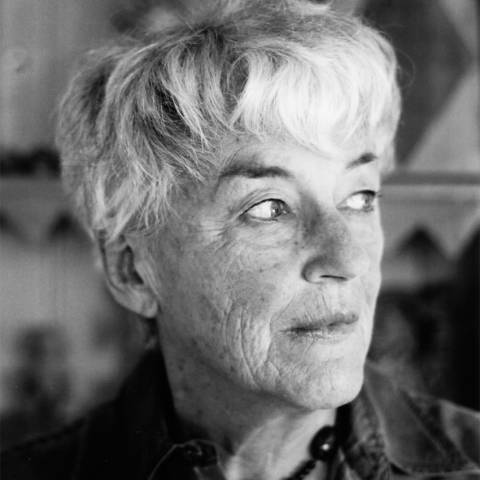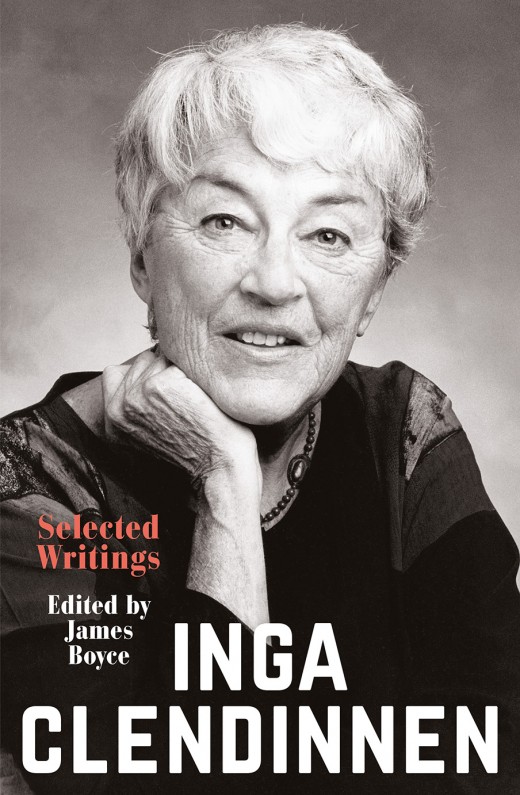News

News >
Read an extract: Inga Clendinnen
Sunburn, roaming dogs and endless games of cricket – read ‘At the Beach’, a short essay from Inga Clendinnen’s collection of selected writings.
When I was a kid, with not many private cars around and petrol still rationed, you had to be at the seaside to go to the beach, and that meant the Christmas holidays.
Families somehow scraped together the rent for a bungalow somewhere: crumbling, ill-equipped, but always within walking distance of the sea. In those days kids went to the beach on their own: you gobbled breakfast, picked up a thin old towel from the beach-pile and off you went. No suntan cream. You were creamed only after you got burnt, which was bad for the future but enjoyable at the time. The hot prickle of sunburn, even the ambivalent pleasure of peeling, were part of ‘being at the beach’.
You took no supplies because you knew The Mothers would appear sometime late in the morning bearing lemon squash and giant sandwiches (white bread, German sausage, tomato sauce). Now I wonder how they did it; coaxing lunches and the reliable gargantuan evening meals out of cantankerous stoves and unreliable local provisions. Years later I met a woman on the beach who was keeping a kosher kitchen for her numerous offspring on what she could import on the occasional passenger-bus, and I remembered The Mothers’ heroism. After they had caught and fed us they would take their one decorous swim for the day, bobbing gently in the shallows. I remember my eighty-plus grandmother bobbing away, and feeling outraged: surely the sand, the sun, the sea, belonged solely to the young? I don’t feel that any more.
Then you didn’t say, ‘I’m taking the dog to the beach’. In those days dogs were free agents and if you went, the dog came too. Our dog had owned a collar once, but he lost it. He never had a lead. No real dog would dream of submitting to a lead. The only dogs I knew who endured that humiliation were a brace of tall show-dogs who lived in the tall house on the crest of the hill. Every day their tall mistress would ‘take them for a walk’ on their elegant red leashes while the other dogs lay around and jeered. From casual comments as they passed I discovered their breed: Great Black-and-White Poofters. I reported the name back home, and for the next few days a lot of grownups found they needed that information. ‘What are those dogs again, Viv?’ I have since discovered that Great Black-and-White Poofters are also known as English Pointers.
Like the kids, the dogs formed their own society, roaming at will and dropping back home at teatime. Dog-catchers then were regarded much as child-abductors are now. Word of the council van’s coming would flash across the neighbourhood (by running kids), and all visible dogs, your own or anyone’s, were grabbed and bundled into wash-houses until the danger was past. Committed dog-rescuers would undertake guerilla actions. My elderly aunt sneaked up and released a whole wagonful of captured dogs in Kew High Street, then legged it downhill with the dog-catcher after her. She got clean away. There were a lot of hard eyes watching the chase, so I don’t think he was game to catch her anyway. She became a local hero (‘Eight dogs running every which way! You should have seen the old girl go!!’) and for quite a while after that she wasn’t allowed to pay for anything in the shops. Even the vicar mumbled something about ‘all God’s creatures’, and shook her thin old hand.
The dogs patrolled the borders of their home territories, but while there was a lot of bristling and snarling there wasn’t much fighting unless there was a new dog on the block, and that didn’t happen often. In those days people and dogs stayed put. But on Bonfire Night territories would get confused as we rushed from bonfire to bonfire, so that was the night of the epic dog fights when old grudges were settled. (I wish I had the space to tell you about the classic battle on 5 November 1947 between our dog Dixie and Nugget Robertson from down the hill. It went on for four hours and Dixie won.) Men fought on that night too, for much the same reasons, and as my mother said, at least the dogs weren’t drunk. On the beach, with home territory shrunk to a little heap of sandy towels, they scarcely fought at all, although they did like to urinate on unguarded towels.
Dogs also stole tennis balls. One long Torquay day, Dixie managed to snaffle thirteen, his personal best. We’d bury them one by one as he brought them up, so when people came whining across saying, ‘Could we please have our tennis ball back?’ we’d look innocent and say ‘What tennis ball?’ or ‘He’s not our dog’, while Dix sat grinning on our towels.
Everyone took a bat and a couple of tennis balls with them to the beach along with the towels because after the hour in the surf came the cricket. On weekday mornings, with the beach empty of adults, we’d make up teams between ourselves, but in late afternoons and at weekends there would be a big game organised by men. Boys were invited in (‘you take cover point, mate’) but a pre-pubertal girl could insert herself if she took up a sufficiently modest fielding position, standing quietly knee-deep in water or on the first line of the dunes, and after a while one of the men would nod to you, and you’d know you were in: that from now on you were allowed to touch the ball; you were allowed to field. But not, of course, to bat or bowl. As night came down and the men began peeling off to go home, boys might be ‘given a bat’, and as the game became increasingly derelict, a bowl, or even a turn behind the stumps. Girls? Never. We didn’t mind. We ran to and fro enthusiastically developing our fielding skills, and glowing if we were praised (‘you’ve got a good wrist there, girlie’).
Why was it so entrancing? I think because it involved men, and not only men but men in relaxed play. In those days men did not socialise with women, and less with female children. If they were present at all they would be a masculine knot somewhere in the middle distance. In the big games of beach cricket I was briefly allowed inside that closed world. I discovered the male love of rules and rituals: that while the game might be played on a sand pitch, it was scrupulously conducted. The crisp cries that punctuated it, the urgent appeals to invisible umpires (‘Huzzat?’), scholarly arguments over esoteric points of cricket law (disputed cases settled by the first fleeting moment of consensus) let me see how a game constructed out of tennis balls and a flattened length of wood could be made to transform into theatre revelatory of individual character, and of the male ideal of proper social order.
Big games still sometimes happen on remote beaches, but however exuberant they are, however demanding of space, they are not open to outsiders. These people have come to the beach together. There is no possible entry into their circle. The closest we used to come to a ‘closed’ game was on the formal occasion of the annual factory picnic. Men from our factory would team up with another of equivalent size to pile into a hired furniture van along with their wives, children and supplies, and take over an acre of beach. These cricket games excluded outsiders because they were grudge matches heavily burdened by history. Individual scores, victories and transcendent moments were remembered through the years and they were so fiercely contested we had to import umpires. While sons were in, nephews and cousins were out, and possible ring-ins challenged: had they been ‘employed’ just to make the team? Meanwhile the women unpacked the afternoon tea and laid out the cakes, while the kids ran those forgotten races – sack-races, three-legged races, egg-and-spoon races – under the kindly eye of furniture-makers or glassmakers or plumbers too old for The Great Game.
The only time we kids took equipment to the beach beyond towel, bat and tennis ball was due to my father’s ambition. He was a furniture manufacturer, and in the lean times after the war he got the idea of making ‘surfboards’: three-ply, cut into long narrow strips, then pressed into a curve at one end. This was to be the family breakthrough, so we were rounded up to help. For a couple of hours every night we’d be down at the factory manning the presser (always a boy’s job) or painting the finished boards to lolly-coloured beauty. Then we were meant to take them to the beach and perform such dazzling feats in the water that everyone who saw us would want one. On the first day of the advertising campaign I failed to spot a dumper and ripped a strip of skin from ankle to hip. Not a good advertisement, to stagger bleeding from the surf while my surfboard wallowed around merrily cracking ankles in the shallows. The boards stood around the factory for a while in silent rebuke to ambition. Then they disappeared, I don’t know where. Childhood is full of unexplained disappearances.
There was a rough democracy practised on the beach in those days, by dogs and by people. Nowadays the only people who still exhibit egalitarian sociability are toddlers. They’ll come staggering over, eye you for a while, then plump down on your towel, or (if they are feeling especially affable) on your lap, intimating that they are ready to join your household, at least temporarily. Then the parents come swooping and scolding and snatch them away, and the babies cry. They are being taught to mistrust strangers. They are being taught to keep their distance. They are being taught modern manners.
I admit there are still encouraging regional variations. Toddlers visit freely around on the beaches of Far North Queensland, perhaps because their parents call them ‘mate’, which inhibits coercive behaviour. And it is true that these days the men who come to the beach with their families are much gentler with their children. You don’t see screaming boys being dragged out into the deep surf by grinning dads. Now they coax their infants into the water, introducing them tenderly to the waves.
Were there playgrounds then? I can’t remember any. The beach was playground enough. Instead of playgrounds there were swings, those chain-and-board ones that would ‘scalp you as soon as look at you’ (my mother again). Usually the swings came in side-by-side couples, but just over the bluff where the Anglesea Surf Lifesaving Club stands now there was an unusually tall one standing solitary in a little clearing among the cypress-pines, and so tall the chains would make small regular ripples right to the top when you shook them. Every evening towards sunset I would cross the road and run down the sandy path to the clearing (there was never anyone there), and slowly work the swing up with feet, muscles and artfully shifting body weight. And then I would be swinging, up and out, until the tremulous moment I hung between sky and sea, above the shining horizon. And then I would plunge back down into the dark pines, and come swooping up again. It is more than sixty years since I did that, but I can feel those exact sensations in muscle and breath and heart at this moment.
Nowadays, what with safety regulations, what with ‘stranger danger’, there are no tall swings in solitary places, blissfully remote from adult control. Now the tame ‘child-friendly’ playgrounds are supervised, and (what with cars, what with prosperity) the summer beaches are crowded. Whole families come trailing down from hot car parks to the sand like refugees, but refugees burdened with mountains of bright plastic and the children waddling behind in floppy wet-suits. They step over people, they step on people; at an invisible signal they pause, dump their burdens; packages unfurl into tents, chairs unfold, beach towels are spread over as much sand as possible; outworks of surfboards and floats are constructed. Then the adults retreat into the tent, and the children fight over the plastic. And then, after a couple of hours spent demonstrating that this is one spectacularly dysfunctional family, they do the whole thing in reverse: possessions are folded up, burdens redistributed, and they trail back to the car park, with the two youngest children in tears. They have ‘been to the beach’.
Is this simply an old woman’s nostalgia? I suppose some people will be glad about dogs being banished. Others will want children closely watched. But only a single lifetime ago you could see Joseph Furphy’s ‘democratical temper’ in fluent action on Australian beaches. How would we describe them now?
Inga Clendinnen: Selected Writings, edited by James Boyce, is out now.
Share this post
About the author
Inga Clendinnen was a writer, academic and historian whose work on Aztec and Mayan cultures and the Holocaust has been praised around the world. Recently, she has also turned her attention to the historical relationship between Indigenous and non-Indigenous Australians. In 1999, her book, Reading the Holocaust, was named best book of the year by the New York Times and won the NSW premier’s general history award. Clendinnen’s Boyer Lectures were published as True …
More about Inga Clendinnen




